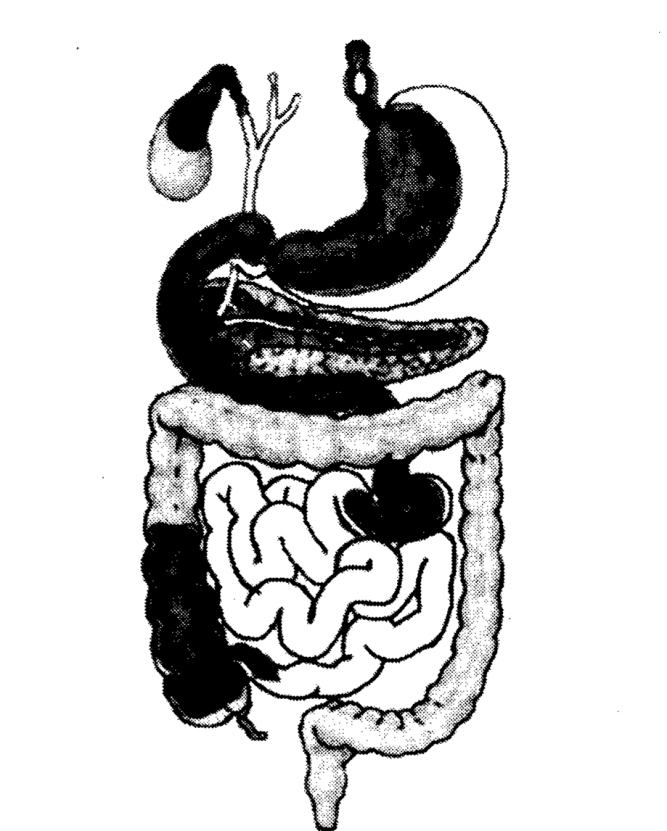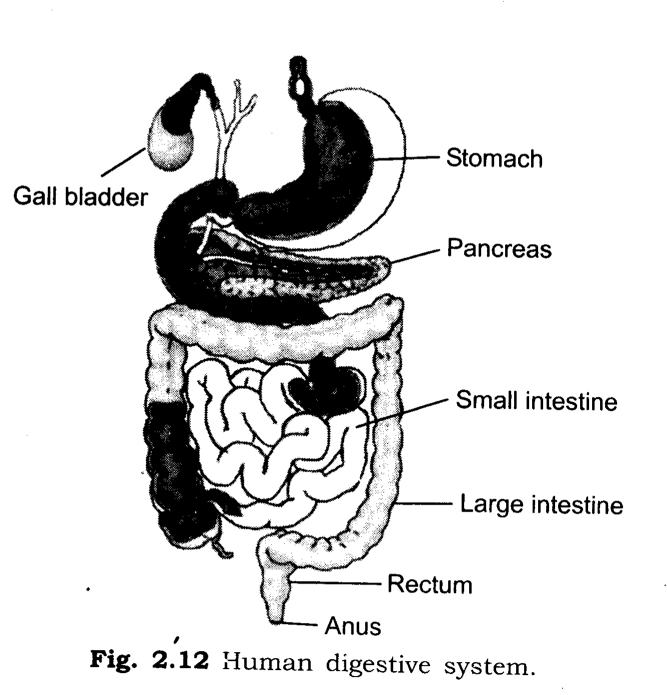Solutions For All Chapters Science Class 7
Q.1.Fill in the blanks:
(a) The main steps of nutrition in humans are ___________, ___________, ___________ , ___________ and ___________
(b)The largest gland in the human body is ___________.
(c) The stomach releases hydrochloric acid and ___________ juices which act on food.
(d) The inner wall of the small intestine has many finger-like outgrowths called ___________
(e) Amoeba digests its food in the ___________ .
Ans.
(a) ingestion, digestion, absorption, assimilation, egestion
(b) liver (c) digestive (d) villi (e) food vacuole.
Q.2. Mark ‘T’ if the statement is true and ‘F’ if it is false:
(a) Digestion of starch starts in the stomach. (T/F)
(b) The tongue helps in mixing food with saliva. (T/F)
(c) The gall bladder temporarily stores bile. (T/F)
(d) The ruminants bring back swallowed grass into their mouth and chew it for some time. (T/F)
Ans. a) F (b) T (c) T (d) T
Q.3.Tick (S) mark the correct answer in each of the following:
(a) Fat is completely digested in the
(i) stomach (ii) mouth (in) small intestine (iv) large intestine
(b) Water from the undigested food is absorbed mainly in the
(i) Stomach (ii) Food pipe (iii) Small intestine (iv) Large intestine
Ans. (a) (iii) Small intestine (b) (iv) Large intestine
Q.4.Match the items of column I with those given in column II:
Q.5. What are villi? What is their location and function?
Ans. The finger like projections in the inner walls of the small intestine is called villi. These are found in small intestine.
Function: The villi increase the surface area for absorption of the digested food
Q.6. Where is the bile produced? Which component of the food does it help to digest?
Ans. Bile is produced in liver. The bile juice stored in sac called the gall bladder. It helps in the digestion of fats.
Q.7. Name the type of carbohydrate that can be digested by ruminants but not by humans. Give the reason also.
Ans. Cellulose is the carbohydrate that can be digested by ruminants. Ruminants have large sac like structure between the small intestine and large intestine. The cellulose of the food is digested by the action of certain bacteria which are not present in humans.
Q.8. Why do we get instant energy from glucose?
Ans. Because it easily breaks down in the cell with the help of oxygen which provides instant energy to the organism. Glucose does not need digestion, it is directly absorbed into the blood.
Q.9. Which part of the digestive canal is involved in:
(i) Absorption of food ________ .
(ii) Chewing of food ________ .
(iii) Killing of bacteria ________ .
(iv) Complete digestion of food ________ .
(v) Formation of faeces ________ .
Ans. (i) Small intestine (ii) Mouth (iii) Stomach (iv) Small intestine (v) Large intestine
Q. 10. Write one similarity and one difference between the nutrition in amoeba and human beings.
Ans. Similarity: The digestive juices in amoeba are secreted into food vacuole and in human beings the digestive juices are secreted in stomach and small intestine. Then the juices convert complex food into simpler soluble and absorbable substances. ‘
Difference: Amoeba captures the food with help of pseudopodia and engulf it. In human beings food is taken by the mouth.
Q.11. Match the items of Column I with suitable items in Column II.
Ans.
Q.12.Label Fig. 2.11 of the digestive system (as given in the NCERT Textbook Exercise)
Ans.
Q.13. Can we survive only on raw, leafy vegetables/grass? Discuss.
Ans. We know that the animals, fungi, bacteria, non-green plants and human being do not have the ability to make their own food. They depend upon autotrophs for their food directly or indirectly. The green plant (leafy vegetables/grass) trap solar energy and make their own food in the form of glucose. So, we can say that leafy vegetables and grass can provide sufficient energy to help us survive.






Leave a Reply